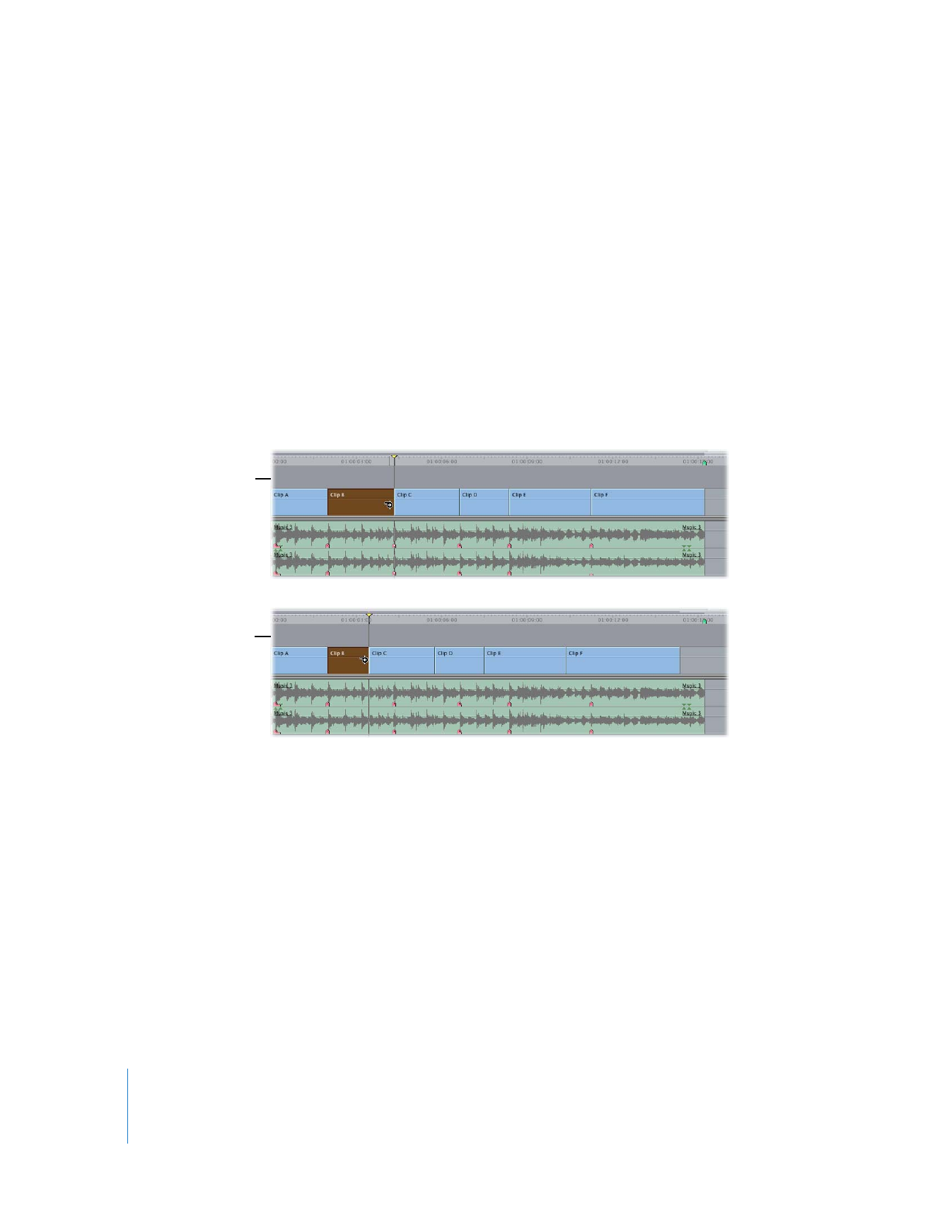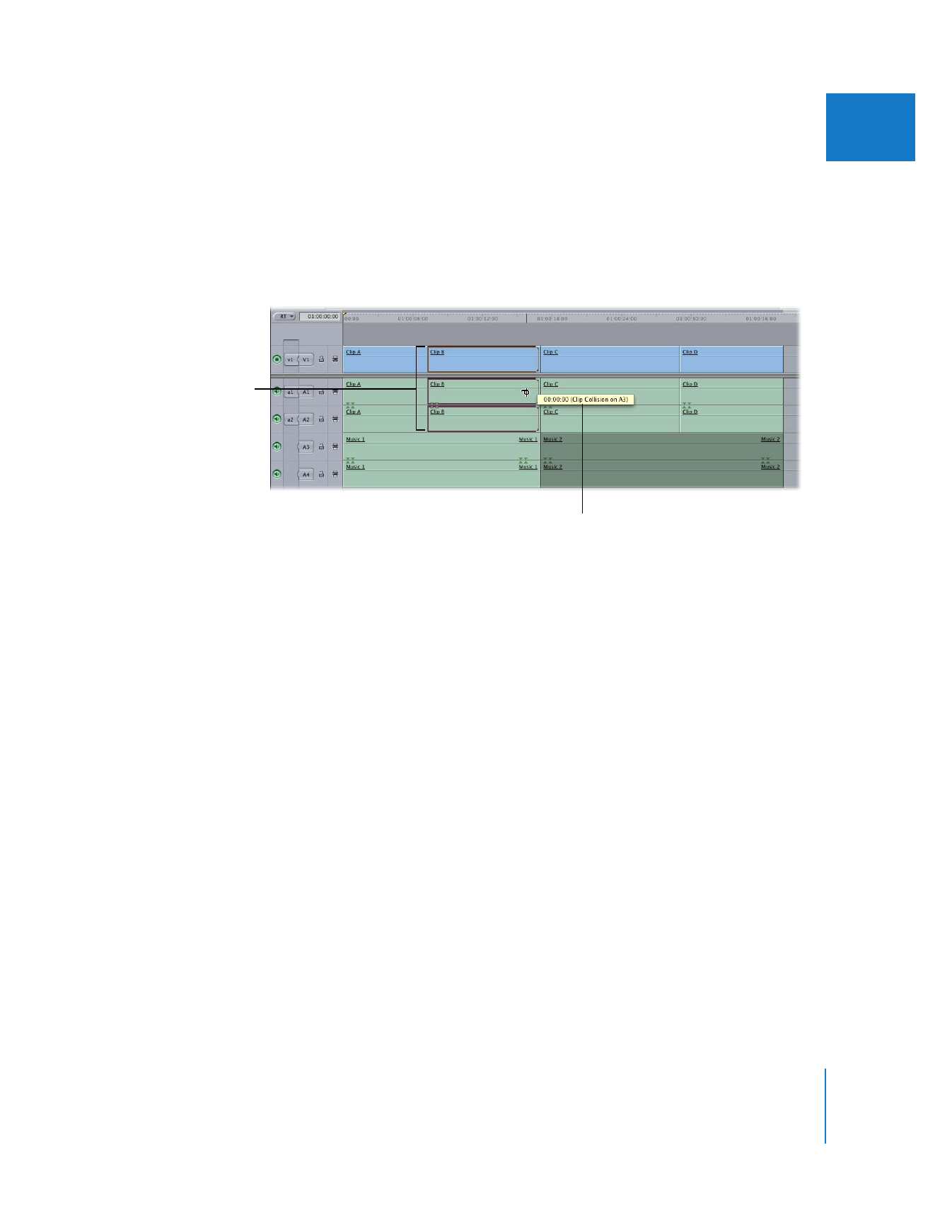
About Ripple Edits and Sync Relationships of Clip Items
on Other Tracks
When you perform ripple edits, it is fairly easy to cause linked clip items across tracks to
go out of sync with each other. This usually happens when you perform a ripple edit on
one track while other tracks are locked, so the clip items on that track can’t move in
sync after the ripple edit.
For example, if you have video clip items edited to the rhythm of a music track, rippling
clips in the video track moves them out of sync with the music. In this case, you
probably shouldn’t use the Ripple tool. Instead, you can change the length of a clip
item without moving other clips in the Timeline. If you shorten the clip item, this
means there will be a gap in the video track that you need to fill, but at least all of your
other clips won’t be out of sync with the music.
Final Cut Pro tries to prevent you from performing ripple edits that will cause linked
clip items to go out of sync. Final Cut Pro assumes that any overlapping clip items
should maintain the same sync relationship before and after an edit. Furthermore, a
ripple edit cannot cause any clips to overwrite other clips.
Before the edit,
clips are in sync with
markers on the
audio tracks.
After a ripple edit, the
sync relationship
has changed.

Chapter 18
Performing Slip, Slide, Ripple, and Roll Edits
331
III
In the example below, Final Cut Pro won’t allow you to perform a ripple edit because
the second music clip in tracks A3 and A4 would either need to be shortened, or would
overwrite part of the first music clip in order to stay in sync with the clip items in V1,
A1, and A2. Since the ripple edit cannot force the second music clip to overwrite the
first music clip, Final Cut Pro warns you that the ripple edit cannot be performed
because there is a clip collision on track A3 (and A4).
There are three ways to solve this problem:
 Lock tracks A3 and A4 so that Final Cut Pro does not attempt to ripple the second
music clip (see “
Locking Tracks to Prevent Edits or Changes
” on page 128).
 In addition to selecting the clip Out points in tracks V1, A1, and A2, you can also
select the first music clip’s Out points in A3 and A4.
 Instead of selecting the first music clip’s Out points, you can perform an asymmetric
edit by selecting the clip Out points in tracks V1, A1, and A2, and the second music
clip’s In points on tracks A3 and A4. This causes the first clip to be shortened from the
Out point while the second clip is shortened from its In point. For more information
about asymmetric editing, see “
Asymmetrical Trimming with the Ripple Tool
” on
page 332.
...Final Cut Pro won’t allow the
edit because the second music
clip in tracks A3 and A4 cannot
overwrite the first music clip.
Although your intention
is to only ripple the
selected clips...

332
Part III
Fine-Tuning Your Edit